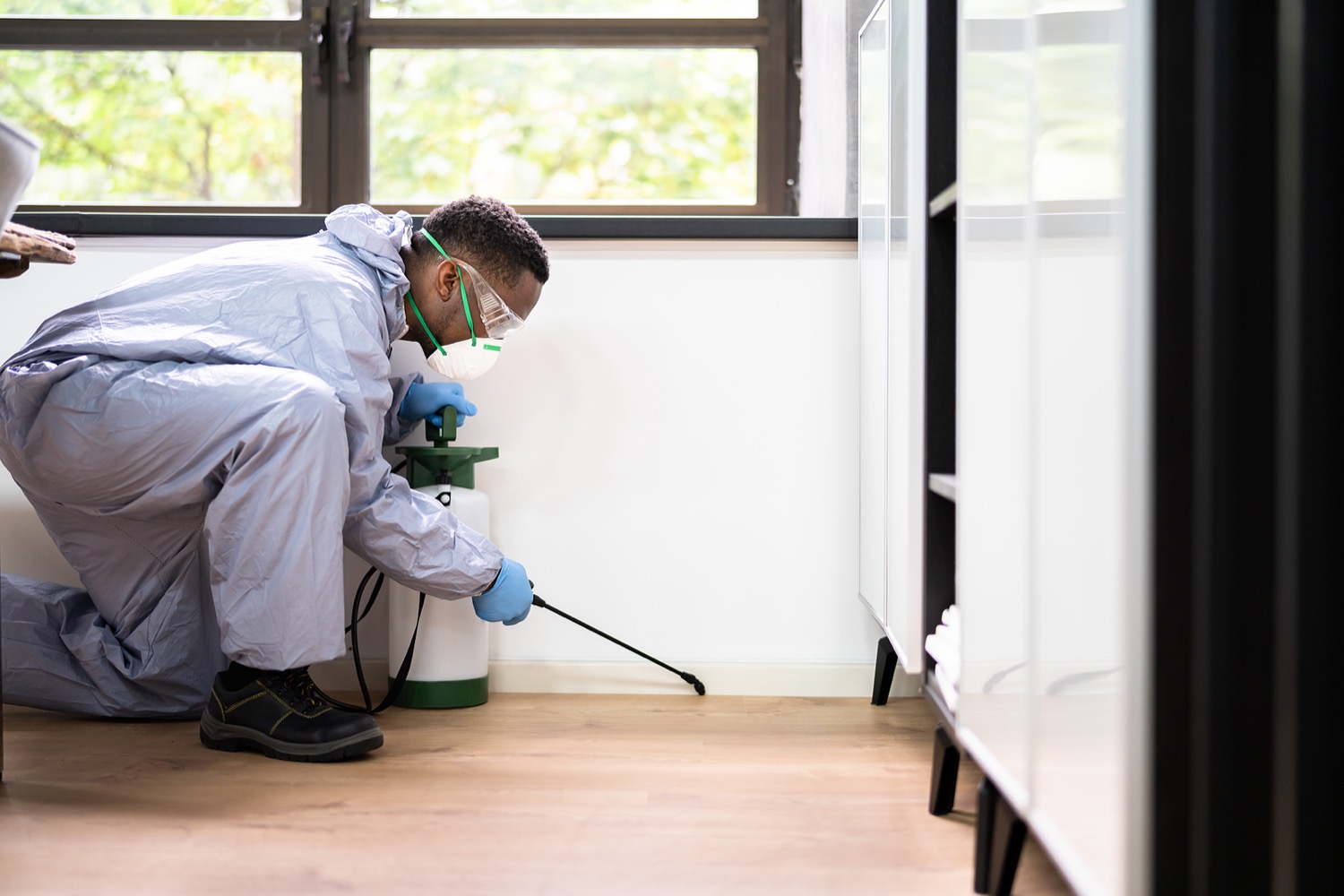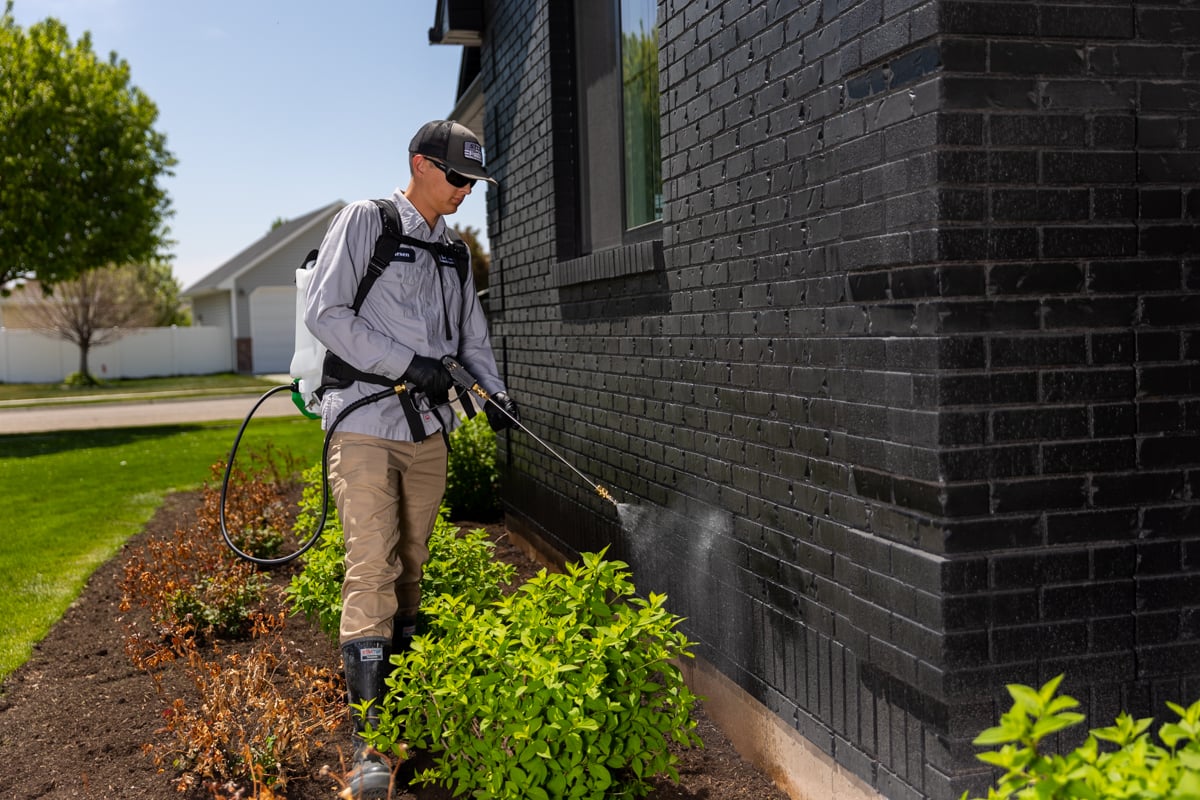A1 Bed Bug Exterminator Charlotte - Specialized Bed Bug Removal
A1 Bed Bug Exterminator Charlotte - Specialized Bed Bug Removal
Blog Article
Bed Bug Therapy Failure: Comparing Chemical Vs. Non-Chemical Solutions
In the world of insect control, specifically when managing the relentless problem of bed insects, the selection between chemical and non-chemical therapy solutions can be a crucial one. Both methods supply unique benefits and drawbacks, affecting elements such as efficiency, security factors to consider, and overall expense. By taking a look at the nuanced details of each method, a more clear understanding of which path to pursue in addressing a bed pest infestation can be acquired.
Effectiveness of Chemical Therapies
Chemical therapies for bed insect problems have actually been extensively identified for their fast and powerful efficacy in getting rid of these insects. When taking into consideration the effectiveness of chemical treatments, it is crucial to recognize that they can supply a fast and thorough option to a bed insect problem. Specialist pest control specialists commonly rely on pesticides to target bed bugs at numerous stages of their life process, consisting of adults, fairies, and eggs. These chemicals typically function by interrupting the bed pests' nerves, leading to paralysis and eventual fatality.
Additionally, chemical treatments have the benefit of providing residual effects, implying that they can continue to eliminate bed pests also after the first application. This recurring activity is particularly beneficial in combating any kind of prospective re-infestations. Furthermore, the rapid action of chemical treatments can bring alleviation to people facing extreme bed pest invasions, enabling them to restore control of their living rooms quickly.
Safety And Security Worry About Chemical Solutions
One crucial facet that requires mindful factor to consider when using chemical services for bed insect treatment is ensuring the safety and security of passengers and the environment. Direct exposure to certain chemicals utilized in bed pest treatments can lead to respiratory problems, skin inflammation, or other negative responses, especially in individuals with pre-existing conditions or sensitivities.
In addition, the ecological effect of chemical options is one more considerable factor to consider. Some pesticides made use of in bed pest treatments might be harmful to beneficial pests, wild animals, and environments if they seep into the dirt or water systems. It is important to make use of chemical treatments deliberately, following safety and security standards, and considering much less poisonous options to reduce these dangers and ensure the risk-free and reliable monitoring of bed bug problems.
Benefits of Non-Chemical Strategies
Thinking about the potential safety and security concerns and environmental effect connected with chemical options for bed pest treatment, discovering non-chemical techniques presents an encouraging option with numerous unique advantages. Non-chemical treatments are eco friendly, as they do not add to air or water pollution, making them a lasting option for parasite control.
In addition, non-chemical options can be efficient in targeting bed bugs, consisting of hard-to-reach locations where chemical treatments may not pass through. Approaches such as warmth therapy, vacuuming, vapor cleansing, and mattress coverings provide complete obliteration without making use of hazardous chemicals. In addition, non-chemical methods can be much less turbulent, needing very little prep work and enabling quicker reentry right into treated areas. Overall, selecting non-chemical bed pest treatment approaches not just prioritizes safety and security and environmental management yet likewise ensures effective and thorough insect control.
Limitations of Non-Chemical Treatments

Additionally, non-chemical treatments commonly require multiple applications to attain successful elimination. This can be time-consuming and might not constantly guarantee complete removal of all bed insects home bugs control and their eggs, particularly in surprise or hard-to-reach places.
In addition, the success of non-chemical therapies heavily counts on correct application and thoroughness, which can be testing for people without professional knowledge. Insufficient application of non-chemical approaches might lead to incomplete elimination, resulting in relentless invasions and the demand for additional treatments.
Consequently, while non-chemical treatments have their advantages, it is vital to acknowledge these restrictions and consider them when determining one of the most efficient technique for managing bed bug problems.
Cost Comparison: Chemical Vs. Non-Chemical Options
Offered the constraints connected with non-chemical treatments, an essential facet to assess in the context of bed bug monitoring is the price comparison in between chemical and non-chemical alternatives. In contrast, non-chemical treatments like warmth treatment or steam can be much more pricey, with costs ranging from $1,000 to $6,000 for an entire home. While the initial price of chemical treatments may seem reduced, multiple therapies might be called for to completely eliminate the infestation, possibly enhancing the overall cost.
Verdict

Considering the potential safety and security worries and environmental effect associated with chemical options for bed pest therapy, discovering non-chemical methods provides a promising alternative with several distinctive benefits.Given the limitations linked with non-chemical biological pest control therapies, an essential facet to assess in the context of bed insect monitoring is the price contrast in between chemical and non-chemical choices. In contrast, non-chemical therapies like warmth treatment or steam can be a lot more pricey, with prices varying from $1,000 to $6,000 for an entire home. While the preliminary price of chemical treatments may appear lower, numerous treatments might be called for to totally get rid of the invasion, possibly enhancing the general price.In final thought, when comparing chemical and non-chemical bed insect treatment options, it is vital to think about effectiveness, safety, benefits, constraints, and price.
Report this page